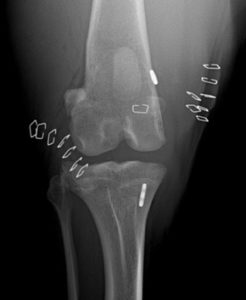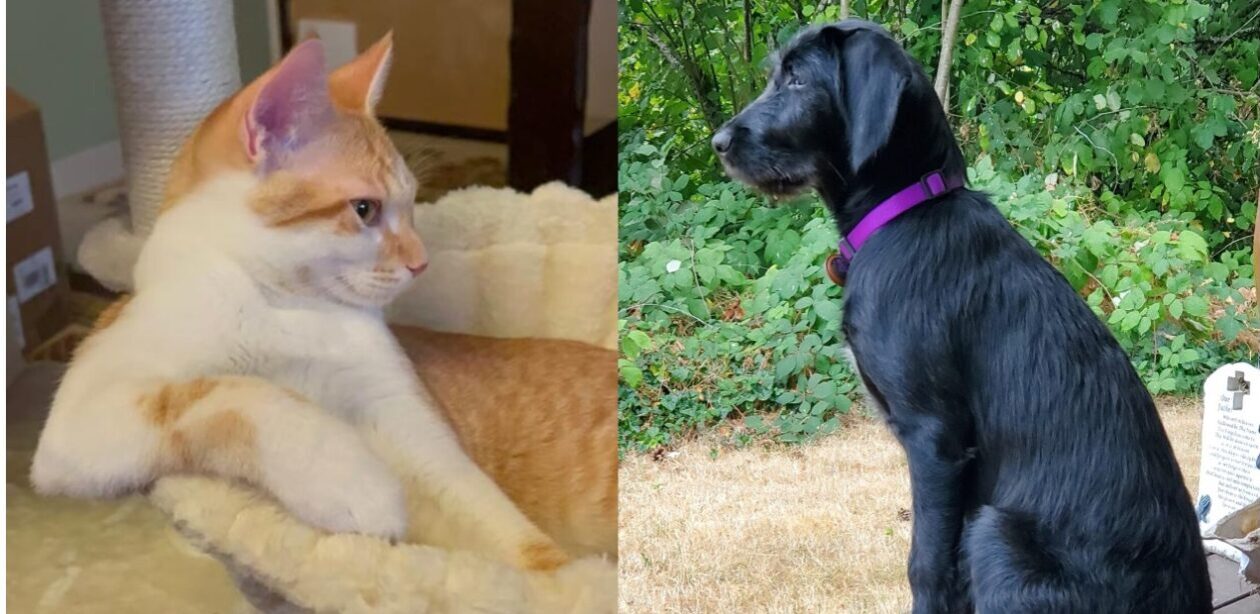In dogs the most common back leg injury is the tear or rupture of the Cranial Cruciate Ligament (CCL). In humans the ligament is named the Anterior Cruciate Ligament. You may have heard of football players injuring the ACL; this is the same injury in dogs. While cats can have this injury , too, it is more common in larger dogs. They may be exceptional athletes that have experienced a trauma.
For example a Border Collie in a pasture might land a foot in a mole hole. However, the more common scenario is the overweight dog who gets limited exercise. Then he gets thrown a frisbee or chases a squirrel and the hind quarters are not synchronized with the rest of the body. The knee takes a quick twist and the CCL bears the brunt of the momentum. The ligamental cord may fray or it may fully become detached from the bone. Lameness is usually immediately observed. If the injury is a tear (fray) the dog may improve with prescription ant-iinflammatories, nutritional support, weight loss and rest. Yet, this is now a weakened area of the body and often gets injured again.
The canine knee is a complex joint. The knee contains 13 ligaments which articulate the joint. Ligaments attach from bone to bone which keeps the joint stable, positioned and flexible. If the CCL is injured the knee is not weight-supporting due to isometric forces and due to pain. In addition the other rear leg may now be overworked and can experience the same injury. General conformation can contribute greatly to the knee health. A dog with poor hip conformation may walk differently to compensate and hold the knees at a more stressed angle .

The diagnosis involves a complete lameness exam, sedation and radiographs. You may elect to postpone surgery if the CCL is torn but often surgery is needed several months later. The surgical correction is recommended when the CCL is ruptured. There are several surgical repairs techniques. The Tightrope CCL surgery uses a unique fiber tape and drilling small holes to isometrically stabilize the joint. The TPLO decreases the tibial thrust in the knee anatomy . The TTA counteracts the abnormal cranial thrust by helping the muscles rebalance the joint. The latter two procedures involve an osteotomy which means bone is cut and repositioned. In all surgeries the joint is evaluated to check for meniscal trauma and ligament fragments.
Oral medications are used to control pain and inflammation for the first week after surgery. All of the procedures have extended post-operative recovery . The dogs will not use their leg for several weeks and need extended rest and a schedule for physical therapy at home. Weight loss, nutritional support and regular exercise are important for complete success.
